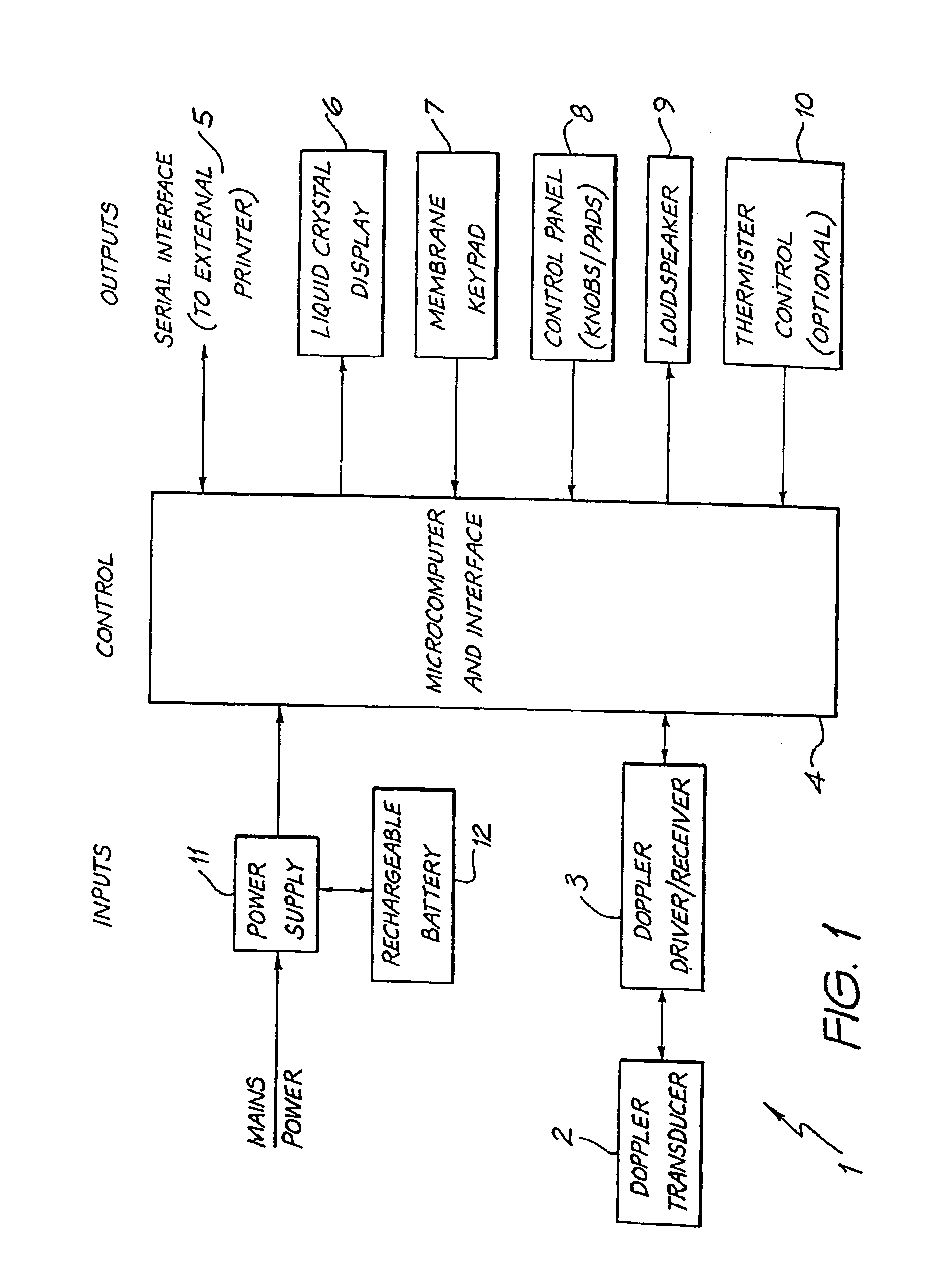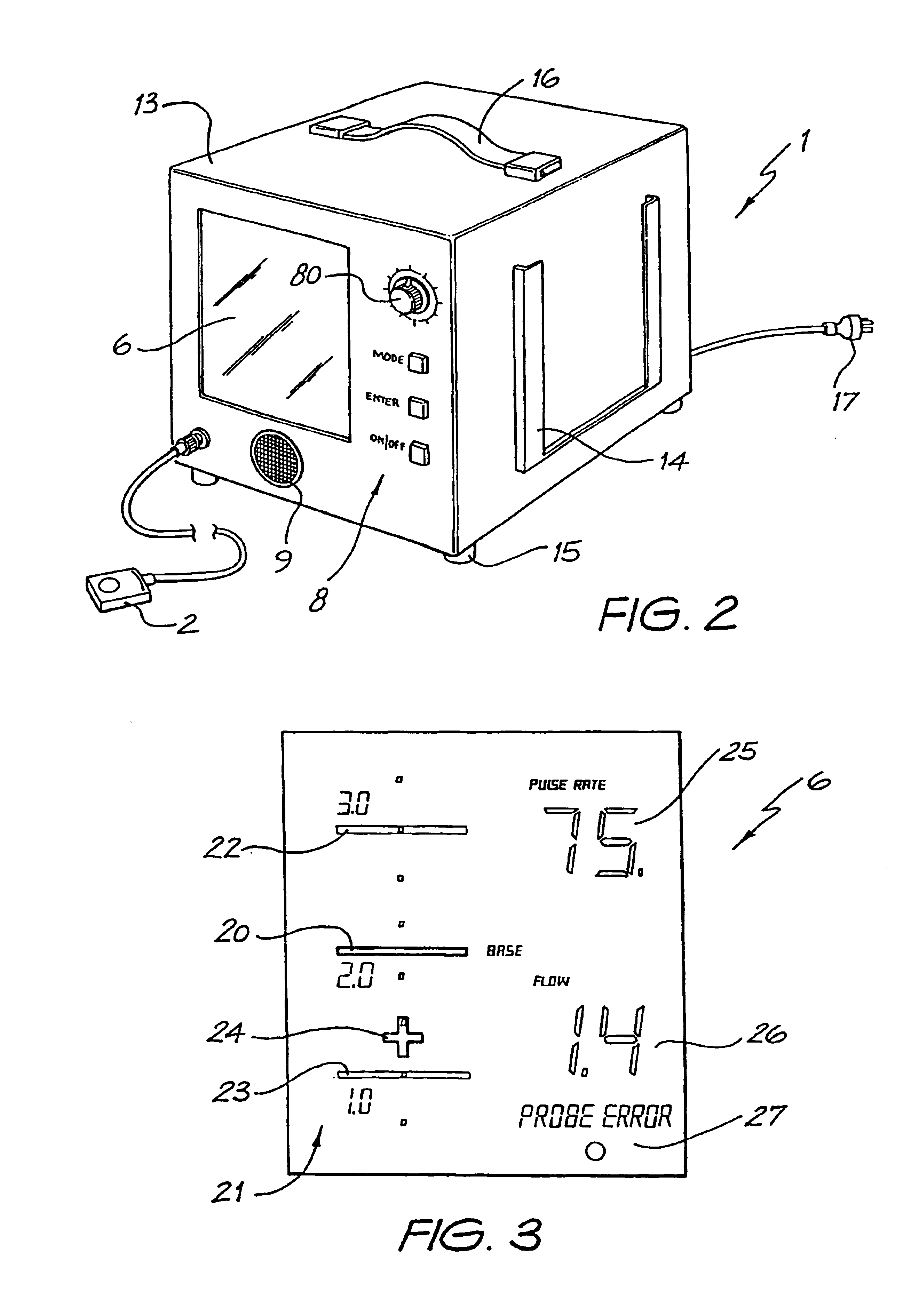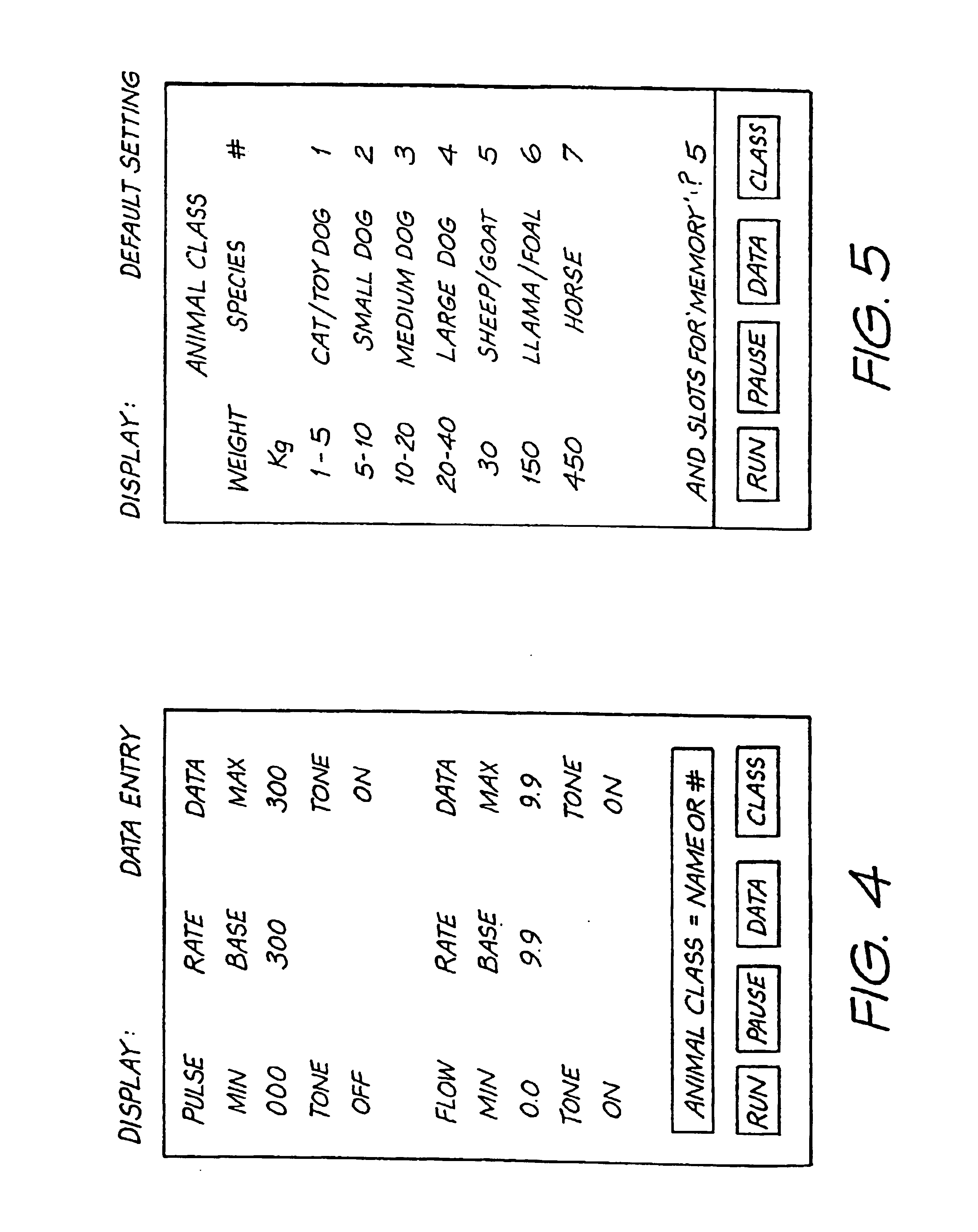Method and apparatus for monitoring haemodynamic function
a haemodynamic function and monitoring method technology, applied in the field of haemodynamic function monitoring methods and apparatuses, can solve the problems of inaccurate indirect blood pressure monitors (systems using pneumatic cuffs and methods to detect arterial pulses), high cost of automated devices, etc., to improve the estimate the relative indication of co or tissue oxygen delivery is accura
- Summary
- Abstract
- Description
- Claims
- Application Information
AI Technical Summary
Benefits of technology
Problems solved by technology
Method used
Image
Examples
Embodiment Construction
[0044]A device in accordance with an embodiment of the present invention, for use with a method in accordance with the present invention, is illustrated in FIGS. 1 through 7. The device can be used as discussed in the preamble, to monitor changes in blood flow in a peripheral blood vessel of a human or animal subject during anaesthesia and surgery. This gives an indication of relative changes in total blood flow (cardiac output) as one of the indicators for enabling the anaesthetist to monitor the subjects haemodynamic condition and suitably adjust anaesthetic dose. Monitoring peripheral blood flow to provide an indication of changes in cardiac output, as opposed to using blood pressure, runs contrary to anaesthesia practice over the past one hundred years where blood pressure is used in surgery to indicate changes in haemodynamic function or cardiac output. As discussed above, the present applicants believe that, because of responses to painful stimuli during surgery, blood pressur...
PUM
 Login to View More
Login to View More Abstract
Description
Claims
Application Information
 Login to View More
Login to View More - R&D
- Intellectual Property
- Life Sciences
- Materials
- Tech Scout
- Unparalleled Data Quality
- Higher Quality Content
- 60% Fewer Hallucinations
Browse by: Latest US Patents, China's latest patents, Technical Efficacy Thesaurus, Application Domain, Technology Topic, Popular Technical Reports.
© 2025 PatSnap. All rights reserved.Legal|Privacy policy|Modern Slavery Act Transparency Statement|Sitemap|About US| Contact US: help@patsnap.com



